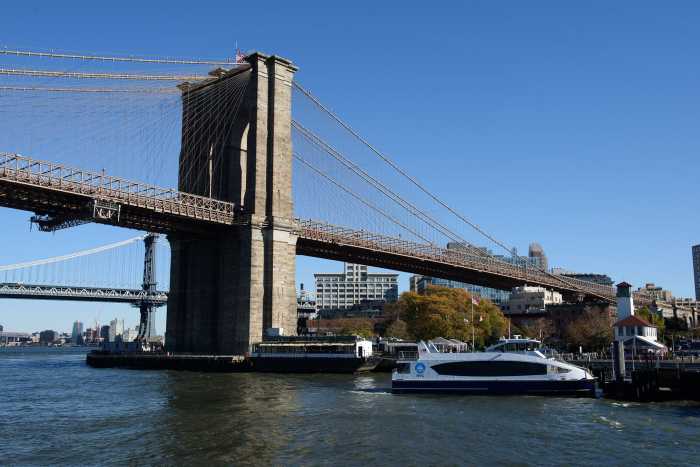It’s hard to tell which images are more disturbing: The black and white footage of the violence that gripped St. Augustine during civil rights demonstrations in 1963, or the color shots of the dilapidated squalor of the city’s black neighborhoods today.
This, in a nutshell, is the message of Williamsburg resident Jeremy Dean’s new feature-length documentary “Dare Not Walk Alone,” which will run in New York City from August 22 – 28: The atrocities of the Jim Crow era are a thing of the past, but the suffering of poor Southern blacks is not.
After graduating from St. Augustine’s Flagler College, Dean – who has a visual arts background – worked for a company that restored stained-glass windows of old churches. While working on a church on St. Augustine’s impoverished west side, Dean became interested in St. Augustine’s history as a pivotal front in the civil rights battles.
In the early 1960s, as the oldest European-settled city in the United States prepared for its Quadricentennial celebration, Martin Luther King and his Southern Christian Leadership Conference saw an opportunity to bring media attention to their cause.
St. Augustine was already thought of as a particularly hostile place for blacks.
“It was a very poor community off the bat, for both blacks and whites,” the 31-year-old Dean explained.
“The white community felt like they didn’t have anything to give. Their attitude was: ‘We’re just getting by, and if we give you anything, we will have nothing.’”
Not surprisingly, King and his fellow protesters were met with violence during sit-ins and marches, which was captured on film and broadcast throughout the nation. These horrific images are credited with rousing the nation’s conscience, helping facilitate the passing of the 1964 Civil Rights Act.
“Dare Not Walk Alone” makes use of this news footage, along with rarely seen images Dean culled from town archives and university libraries throughout the south.
Dean also tells St. Augustine’s story through interviews, most of which feature black civil rights leaders of the time. The most interesting interview, however, features James Brock, the white hotelier whose segregated Monson Hotel became a center of the protests.
Brock – who was 81 when interviewed but since died – gained infamy when he poured hydrochloric acid into his swimming pool to chase out black protesters who dared to swim in the whites-only pool.
In the movie, he comes across as more limited than cruel, a product of his time who “by all accounts, wasn’t better or worse than anyone else,” according to Dean.
It would have been easy for Dean to stop there, ending with the image of Brock as a disturbing vestige of an ignorant past that, like the man himself, is thought to be almost extinct.
But the film segues from the apparent triumph of the civil rights protests to contemporary St. Augustine, specifically, the city’s black west side, which is both figuratively and literally on “the other side of the tracks.”
Far from what civil rights leaders envisioned decades ago, the west side is dotted with run-down houses and beset by drugs, crime, and poverty. According to the 2000 census, the per capita income among blacks is just over $12,000 compared to $30,000 for whites.
For three years, Dean lived in this neighborhood, which, we learn, was effectively isolated from the rest of the city when planners failed to build an interchange to it off I-95. According to a historian interviewed in the film, many believe this omission was an act of retribution against the city’s blacks for their role in the civil rights movement.
For Dean, the son of Christian missionaries who spent much of his childhood in the Amazon jungle, the transition was easier than it would be for most.
“I was used to being immersed in different cultures. It felt kind of natural, even though it was obviously a little different for this young white guy to be living in that neighborhood,” he said.
Along the way, tragedy befalls a family that Dean befriends: Their house burns down after their wood-burning stove – which they use because they can’t afford gas – catches on fire. At movie’s end, the family has no place to go and no money to get there. We are left wondering what will become of them and the millions of other blacks left unfulfilled by the promise of the civil rights movement.
A two-year resident of Williamsburg, Dean resides at 475 Kent Avenue, the South 11th Street artist’s loft that was evicted en masse this past January after the Fire Department turned up a myriad of violations. Building residents did not return to their homes – and in many cases, places of work – until May.
“Dare Not Walk Alone” will be shown at the Pioneer Theater in Manhattan (155 E. 3rd Street) from August 22 – 28.
For more information, go to www.darenotwalkalone.com.
White hotelier James Brock, who gained infamy when he poured hydrochloric acid into his swimming pool to chase out black protesters who dared to swim in the whites-only pool, is one of the interviewees in Jeremy Dean's documentary, “Dare Not Walk Alone”

























